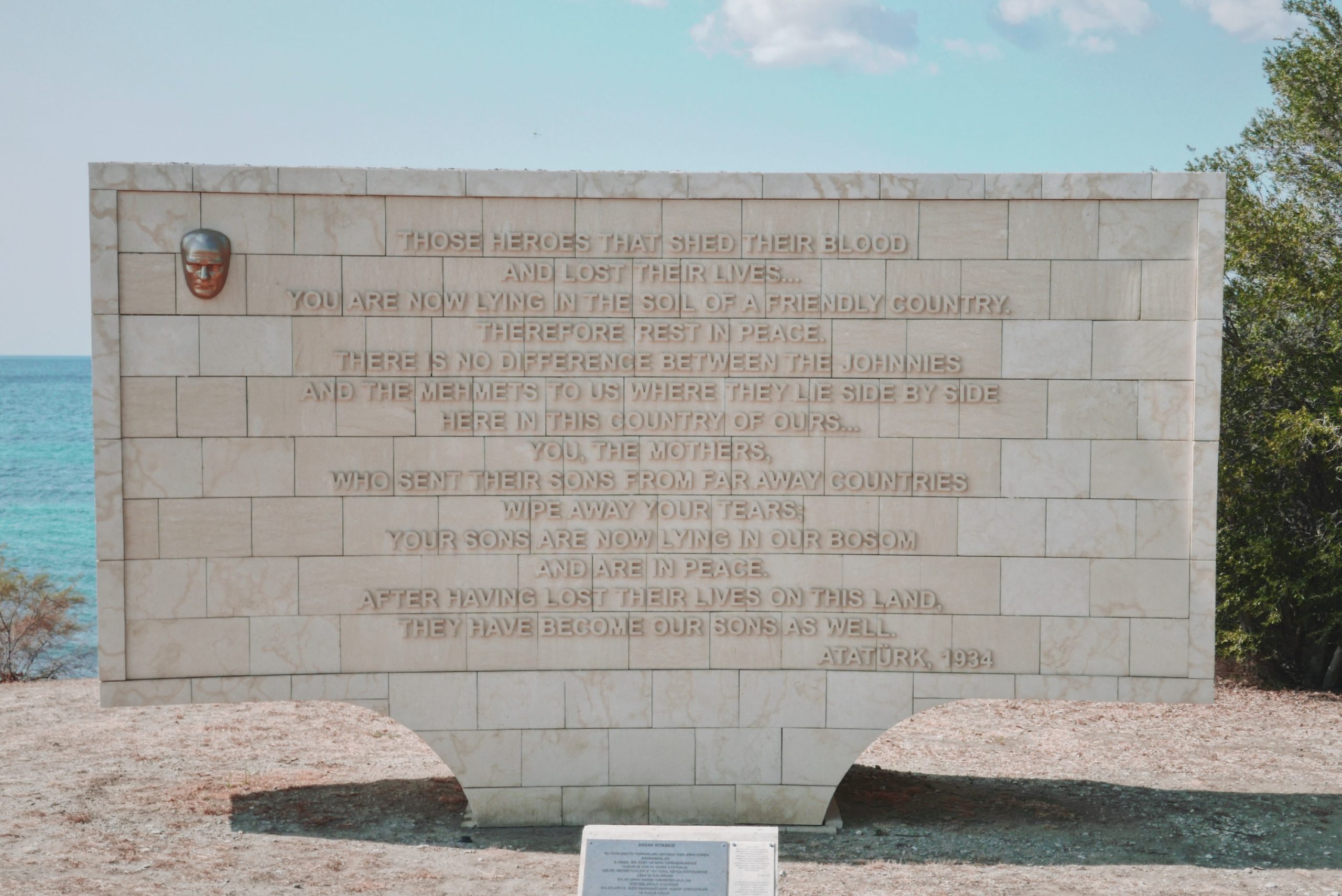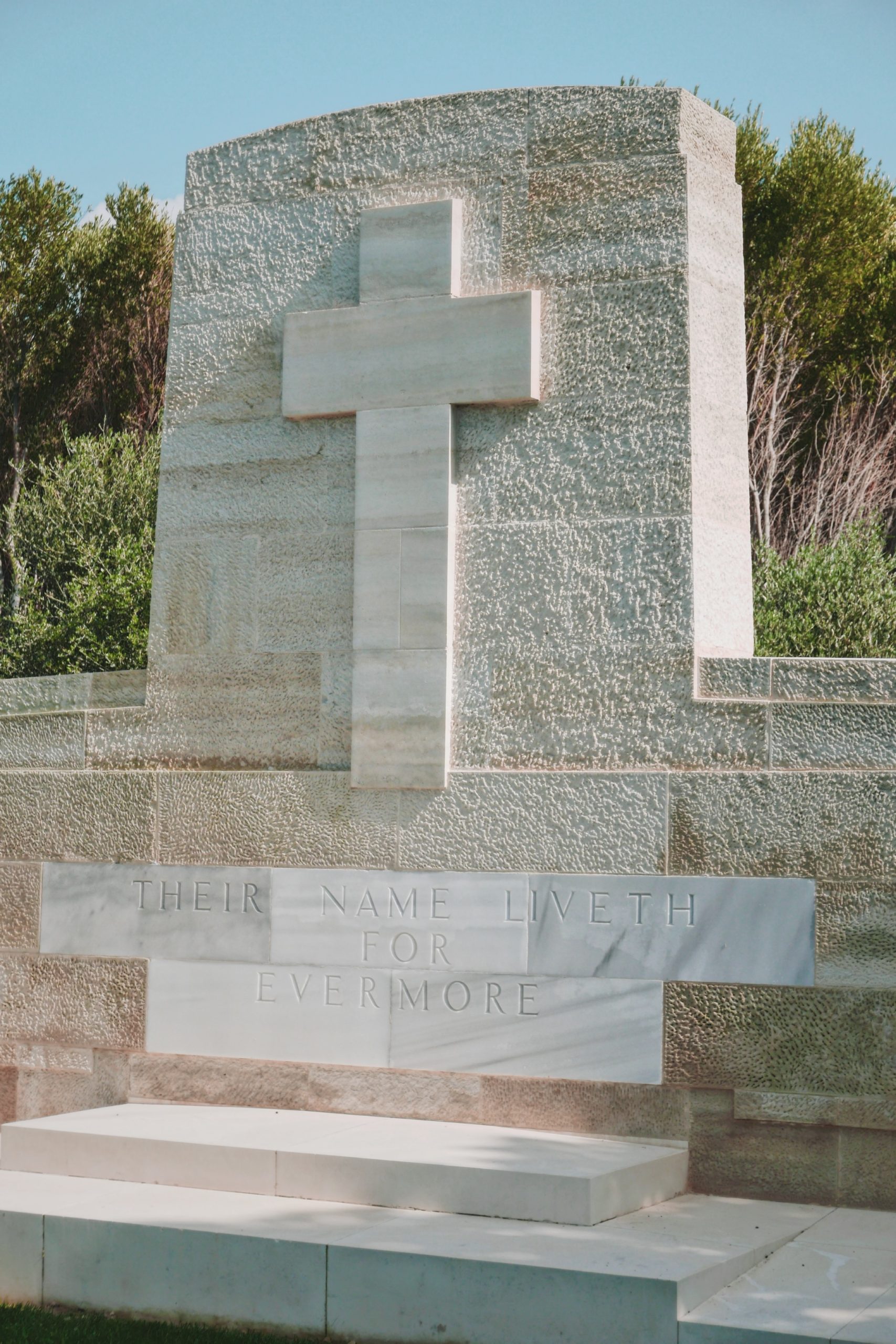
Gallipoli
Drove to Gallipoli today and as usual our guide, Aykut, was full of information, dates, numbers and facts – all far too much for my ADD and Menopausal brain to follow and/or remember. But here are some statistics and stories I do remember …



The 57th Turkish regiment was instructed to “die” defending their position on that fateful day of 25th April 1915 and as a result, everyone of them died. To this day, the Turks don’t have a 57th regiment in their army in remembrance of the 57th regiment.



There is one ANZAC that is buried in the Turkish cemetery near Lone Pine. Apparently the skeletons of two soldiers were found that appeared to have died hugging. They later worked out that they had died in hand to hand combat, one had been wearing a cross around his neck, the other holding the Quran. The Turks traced the relatives of both the ANZAC and Turkish man and invited them to a special commemorative ceremony.



There was such heavy gunfire and fighting at Gallipoli that; 500,000 died in the battle making it the bloodiest battle (until Normandy); they estimate that there were 6,000 pieces of ammunition (bullets, cannon balls, grenades etc) per square metre; there was such heavy gunfire that there are bullets in a museum that have melted together as they have collided midair coming from opposite directions.
The war at Gallipoli is known as the “gentlemen’s war” due to the favourable attitude of the Turkish to their enemies at the time of the battle of Gallipoli. One story is of how the Turks and the Allied Forces decided to resolve a problem of over 4,000 dead bodies from both sides by calling a truce to remove their own to bury them. As a result they started exchanging supplies across the trenches (cigarettes, canned food etc) together with notes to each other (apparently French was the common language of the day). There is a story that the Turkish sent a note to the Allied Forces saying “No more bully beef please, only milk”.




Also the story of an ANZAC that was injured in no mans land and was calling out for help. A Turkish soldier held up some white undies, climbed out of the trench, lifted the ANZAC and carried him across to the Allied Forces trenches where he lay him down before returning to his trench (pic of commemorative statue below).

ANZAC cove today is a really beautiful spot and on the one hand hard to imagine the bloodshed of 1915 but equally, on the other hand, easy to imagine – especially when you see where they landed – had they landed 200 m up the coast, it may have been a different outcome. But truly the most heartbreaking thing for me was reading the words of Ataturk (that I’ve heard before but just so much more poignant when you’re there), engraved on a huge stone monument at ANZAC cove …
“Those heroes that shed their blood and lost their lives… you are now lying in the soil of a friendly country. Therefore rest in peace. There is no difference between the Johnnies and the Mehmets to us where they lie side by side here in this country of ours… You the mothers who sent their sons from far away countries wipe away your tears. Your sons are now lying in our bosom and are in peace. After having lost their lives on this land they have become our sons as well.





3 Comments
Diane Cooper
It looks so peaceful and beautiful – as you say, hard to imagine the horrors of that time in 1915. May all of those who lost their lives rest in peace. xx
Lynda Maxwell
Found this very emotional, Thiepval Memorial is where our grandfathers brother is.
Patricia Forner
Thank you for your phtos and such a poignant description of the battlefield/graveyard at Gallipoli. So many mothers and fathers wept over the loss of their precious sons who had to endure such a barbarian and heated battle for days on end. The request from the Turks to the Brits to not send them any more tinned meat was hilarious. It is amazing that there was camaradarie and respect, and yet the horrible robotic response to killing one another continued. And for what?